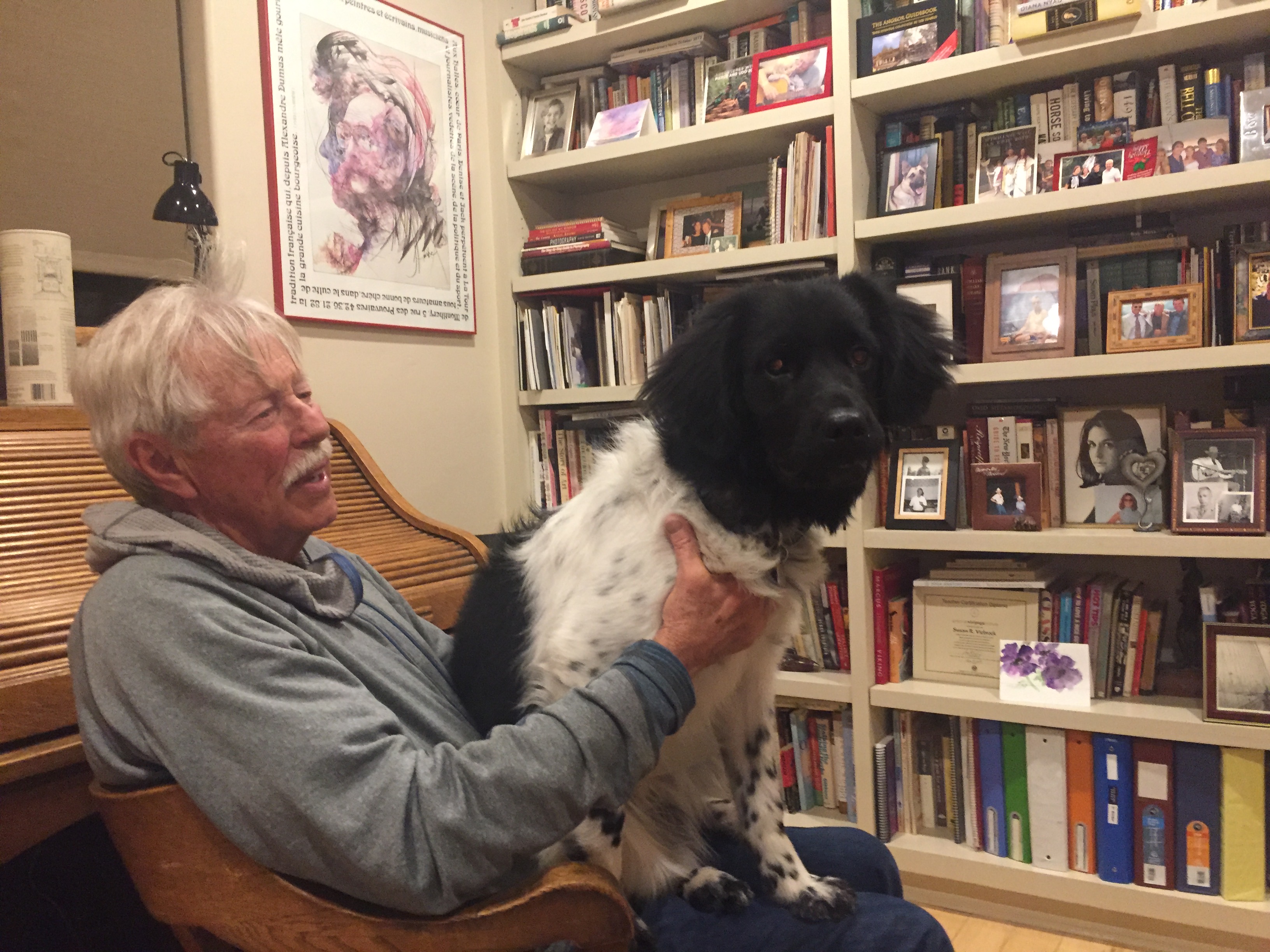
22 Jun “Puppy Dog Eyes,” A Real Thing
In Telluride, the idea of “going to the dogs” is a good thing. Telluride is a puppy paradise. And, in the larger world, researchers have found that the very same hormone – oxytocin – spikes in both human and canine brains when a dog gazes at its owner. The findings suggest owners love their pets in the same way they love family members – and dogs return that devoted affection. Turns out the seductive puppy gaze is an evolutionary thing, as reported by Carrie Arnold in National Geographic.

Clint & Henry the Pup. Clint is looking with love at Henry and Henry is looking (with love) at me taking the picture. Both my men are irresistible. ( Oh and Happy 30th Clint!)
There is a reason we call them “puppy dog eyes”—those soulful, innocent expressions can sway even the most hardened human.
That’s no accident, a new study says. Centuries of domestication have radically reshaped a dog’s eyebrow anatomy, making their faces—and emotions—easily readable to people.
When meeting a person’s gaze, dogs often raise their inner eyebrow muscle to make their eyes look larger and more appealing. (See dog-evolution pictures.)
“There’s no evidence that dogs move this [eyebrow] muscle intentionally, but it creates an exaggerated movement that for us means ‘dog,’” says study leader Juliane Kaminski, a psychologist at the University of Portsmouth in the U.K.
Eyebrow movement plays a major role in human communication, Kaminiski says: “I’m doing it now when I’m speaking to you, even though I know you can’t see me.”
The study is the latest example of how 20,000 years of cohabitation has made our pets finely tuned interpreters of human emotion—possibly more so than any other species. (See 19 ways dogs tell us what they want.)
Eyebrow raising
In her past research, Kaminiski has found dogs are uniquely skilled at understanding gestures, outperforming even non-human primates such as chimps.
Several years ago, Kaminski began investigating the flip side of this relationship, looking at how people decipher dog behavior. In one experiment, published in 2013, she filmed shelter dogs to see if any of their behaviors were linked to how quickly the animal was adopted.
Of all the factors Kaminski examined, only one stood out as significant: the movement of the dog’s eyebrows upward and inward. (See National Geographic’s portraits of dogs.)
Initially, “it was a very surprising result. We didn’t expect something as small as eyebrow movement to have a big effect,” Kaminski says.
But a question remained: Whether this eyebrow movement was unique to dogs, or if it could be found in their ancestor, the gray wolf.
The new study, published this week in Proceedings of the National Academy of Sciences, Kaminski and colleagues dissected and analyzed the facial muscles of six dogs—including a mongrel, a Labrador retriever, a bloodhound, a Siberian husky, a Chihuahua, and a German shepherd—as well as four wild gray wolves. The animals had all died natural deaths, and their bodies were donated to science.
The team discovered the levator anguli oculi medialis, a large and prominent muscle, in all six dog specimens—but it was almost completely absent in wolves…


Sorry, the comment form is closed at this time.